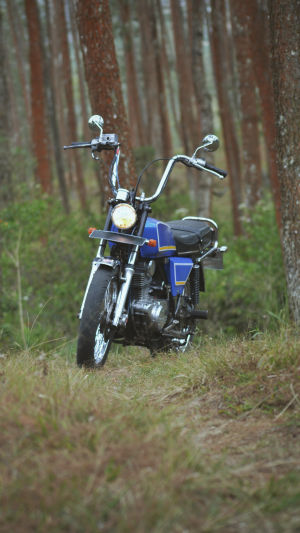Motorcycles, powered by gasoline engines and steered by handlebars, are two- or three-wheeled vehicles that are light, agile, and swift, widely used for patrols, transportation, and sports. Broadly categorized as street bikes, road racing motorcycles, off-road bikes, cruisers, and touring bikes.
Since Gottlieb Daimler, a German, invented the motorcycle in 1885, it has a history of nearly 130 years, developing rapidly with a wide variety.
In 1885, Daimler mounted an engine onto a frame, giving birth to the world's first motorcycle. Motorcycle-related sports are competitive events using motorcycles, divided into two and three-wheeled categories, graded based on engine cylinder displacement. Various competitions include off-road races, multi-day races, road races, track races, and endurance races, ranking participants by speed or driving skills.
Edward Butler, a British inventor in 1884, fitted a power unit to a bicycle, creating a three-wheeled vehicle powered by kerosene. In 1885, German automotive pioneer Gottlieb Daimler produced a three-wheel motorcycle driven by a single-cylinder, four-stroke gasoline engine. He acquired a patent for his invention on August 29 of the same year.
Daimler's first motorcycle utilized a 264 cc engine, generating 0.5 horsepower at 700 rpm, capable of reaching speeds of 12 km/h. As a tribute to his indelible contribution, a monument honoring Daimler was erected at the Cannstatter Wasen Square by the German Association of Engineers, acknowledging his achievement in driving the first motorcycle on this square.
Since Daimler invented the world's first gasoline-powered motorcycle in 1885, the motorcycle's evolution has undergone over a century of tremendous change. The original motorcycle, an authentic representation housed at the Munich Museum of Science and Technology in Germany, was patented by Daimler on August 29, 1885, as the world's first motorcycle.
Limitations of over a century ago, with rudimentary gasoline engines and vehicle manufacturing akin to carriage technology, created substantial differences in appearance, structure, and performance between the original and modern motorcycles. The frame of the original motorcycle was wooden. From the wood grain, it appeared to be crafted by a carpenter.
The wheels were also wooden, coated with a layer of iron. Underneath the frame were several square wooden frames, housing the engine, supported by small wheels on either side to prevent tipping when stationary. Thus, the vehicle essentially had four wheels on the ground. The single-cylinder fan-cooled engine transmitted power through a belt and gear reduction drive, propelling the rear wheel.
The seat was saddle-shaped, and upholstered in leather. With an engine cylinder capacity of 264 mL, it produced a maximum power of 0.37 kW (700 rpm), only one-fifth of a modern simple motorcycle. It reached speeds of 12 km/h, slightly faster than walking. Lacking suspension systems such as springs, it was dubbed the "bone-shaker."
Imagine riding on 19th-century cobblestone streets; it was discomforting. Despite the primitive nature of the original motorcycle, continuous transformations and improvements over the next century led to billions of modern motorcycles.
Motorcycles have weathered a century, evolving towards renewal, speed, and safety. The modern motorcycle industry has introduced numerous advanced technologies. For instance, Harley-Davidson's 1998 FLHRC-1 model adopted cutting-edge automotive engine technology—the fuel injection system, not only enhancing power but also meeting modern society's environmental demands, pioneering 21st-century motorcycles.
High-tech innovations such as optical communication electronic control systems, radar distance-measuring automatic control systems, electronic map guidance systems, and ultrasonic electronic noise reduction systems, employed in some concept motorcycles, have made modern motorcycles more perfect and impressive.





